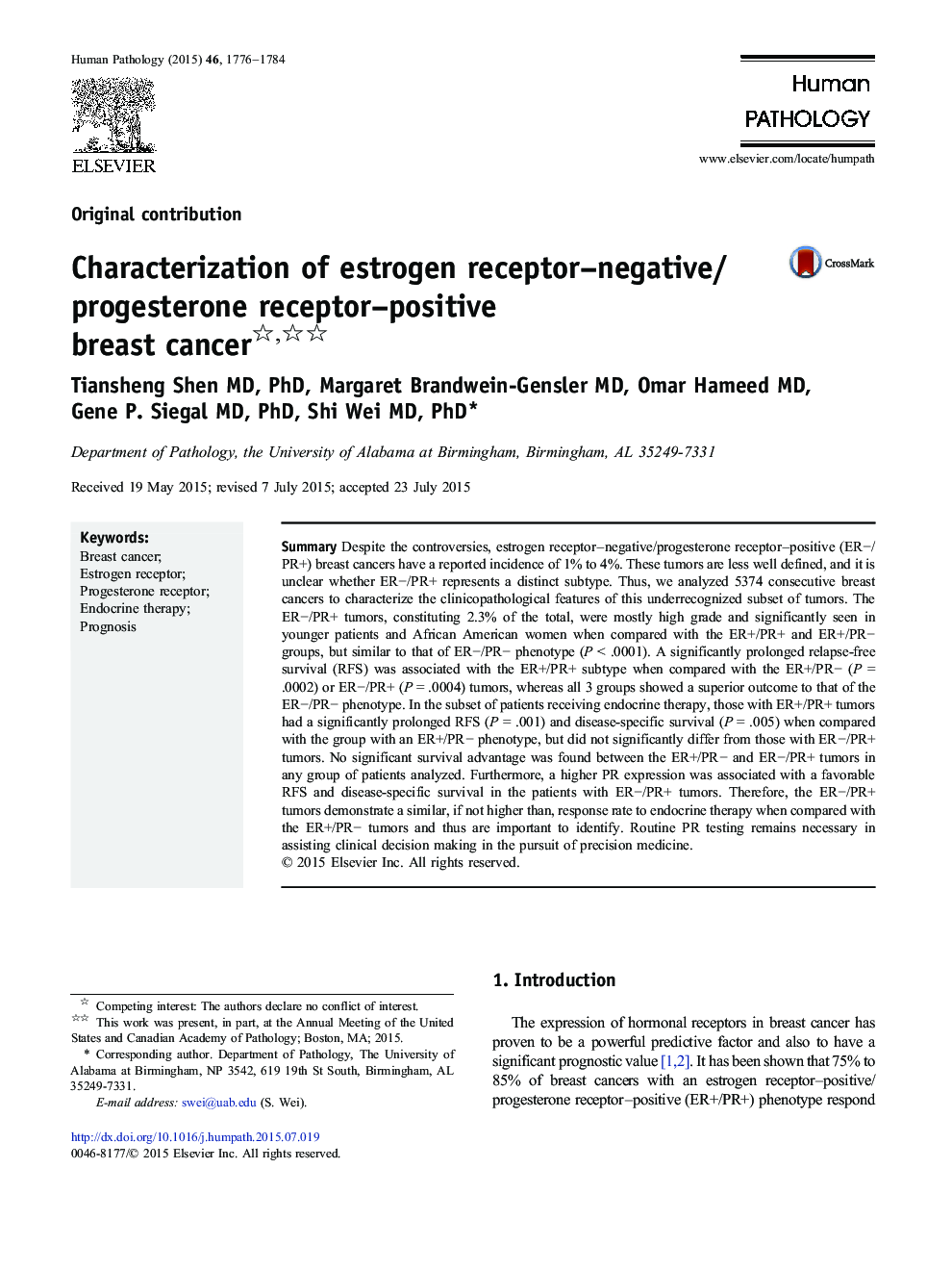| Article ID | Journal | Published Year | Pages | File Type |
|---|---|---|---|---|
| 4132883 | Human Pathology | 2015 | 9 Pages |
SummaryDespite the controversies, estrogen receptor–negative/progesterone receptor–positive (ER−/PR+) breast cancers have a reported incidence of 1% to 4%. These tumors are less well defined, and it is unclear whether ER−/PR+ represents a distinct subtype. Thus, we analyzed 5374 consecutive breast cancers to characterize the clinicopathological features of this underrecognized subset of tumors. The ER−/PR+ tumors, constituting 2.3% of the total, were mostly high grade and significantly seen in younger patients and African American women when compared with the ER+/PR+ and ER+/PR− groups, but similar to that of ER−/PR− phenotype (P < .0001). A significantly prolonged relapse-free survival (RFS) was associated with the ER+/PR+ subtype when compared with the ER+/PR− (P = .0002) or ER−/PR+ (P = .0004) tumors, whereas all 3 groups showed a superior outcome to that of the ER−/PR− phenotype. In the subset of patients receiving endocrine therapy, those with ER+/PR+ tumors had a significantly prolonged RFS (P = .001) and disease-specific survival (P = .005) when compared with the group with an ER+/PR− phenotype, but did not significantly differ from those with ER−/PR+ tumors. No significant survival advantage was found between the ER+/PR− and ER−/PR+ tumors in any group of patients analyzed. Furthermore, a higher PR expression was associated with a favorable RFS and disease-specific survival in the patients with ER−/PR+ tumors. Therefore, the ER−/PR+ tumors demonstrate a similar, if not higher than, response rate to endocrine therapy when compared with the ER+/PR− tumors and thus are important to identify. Routine PR testing remains necessary in assisting clinical decision making in the pursuit of precision medicine.
